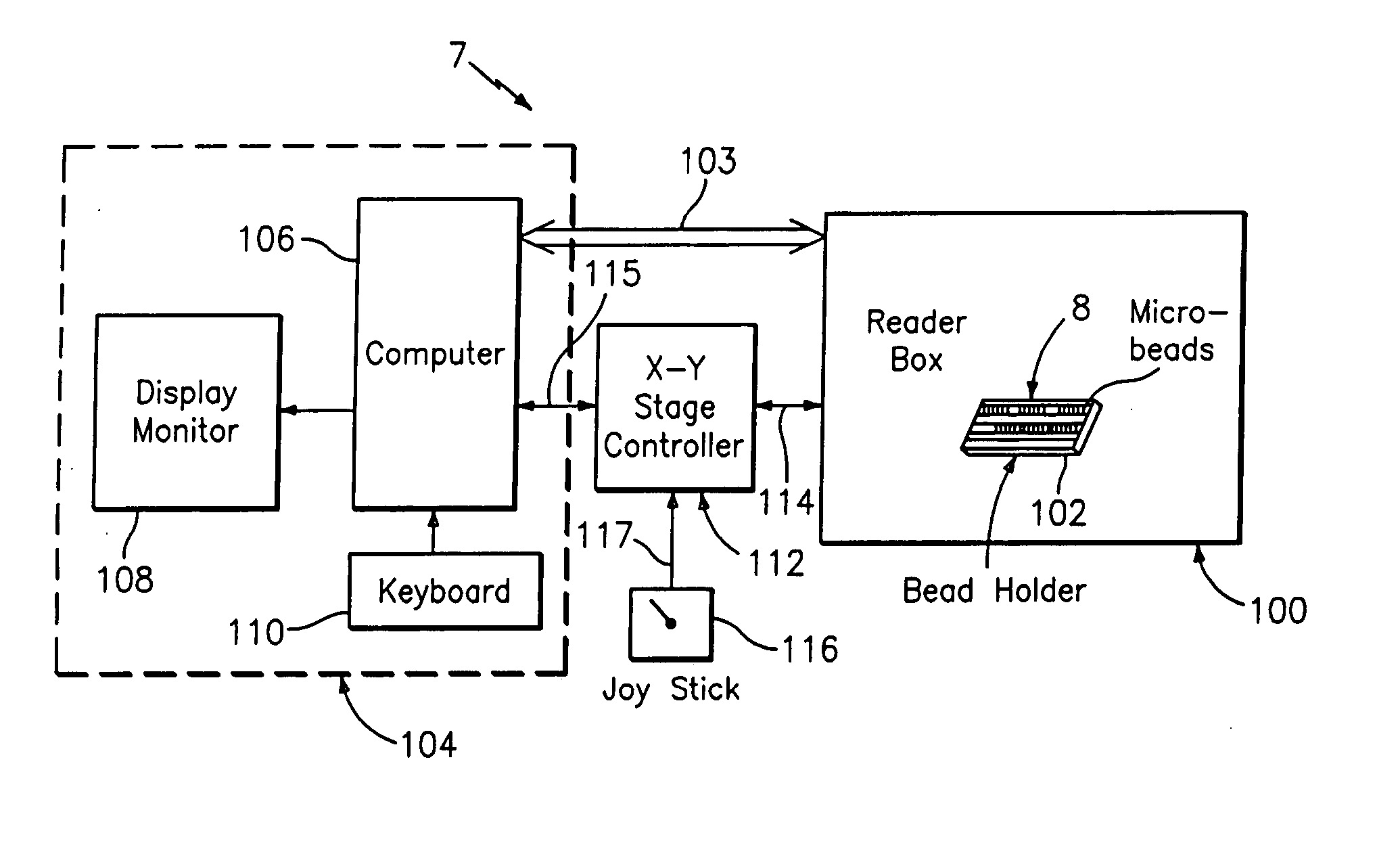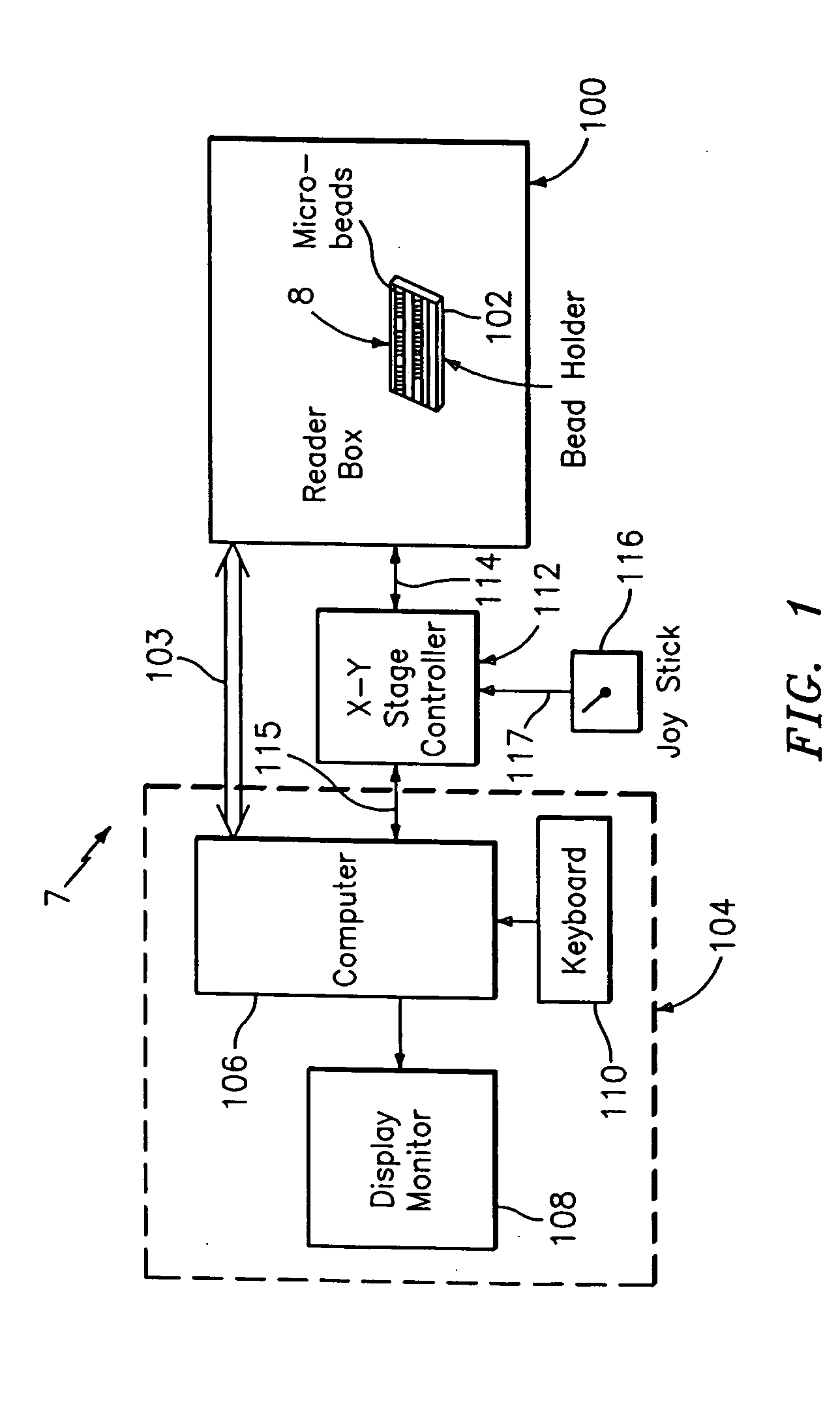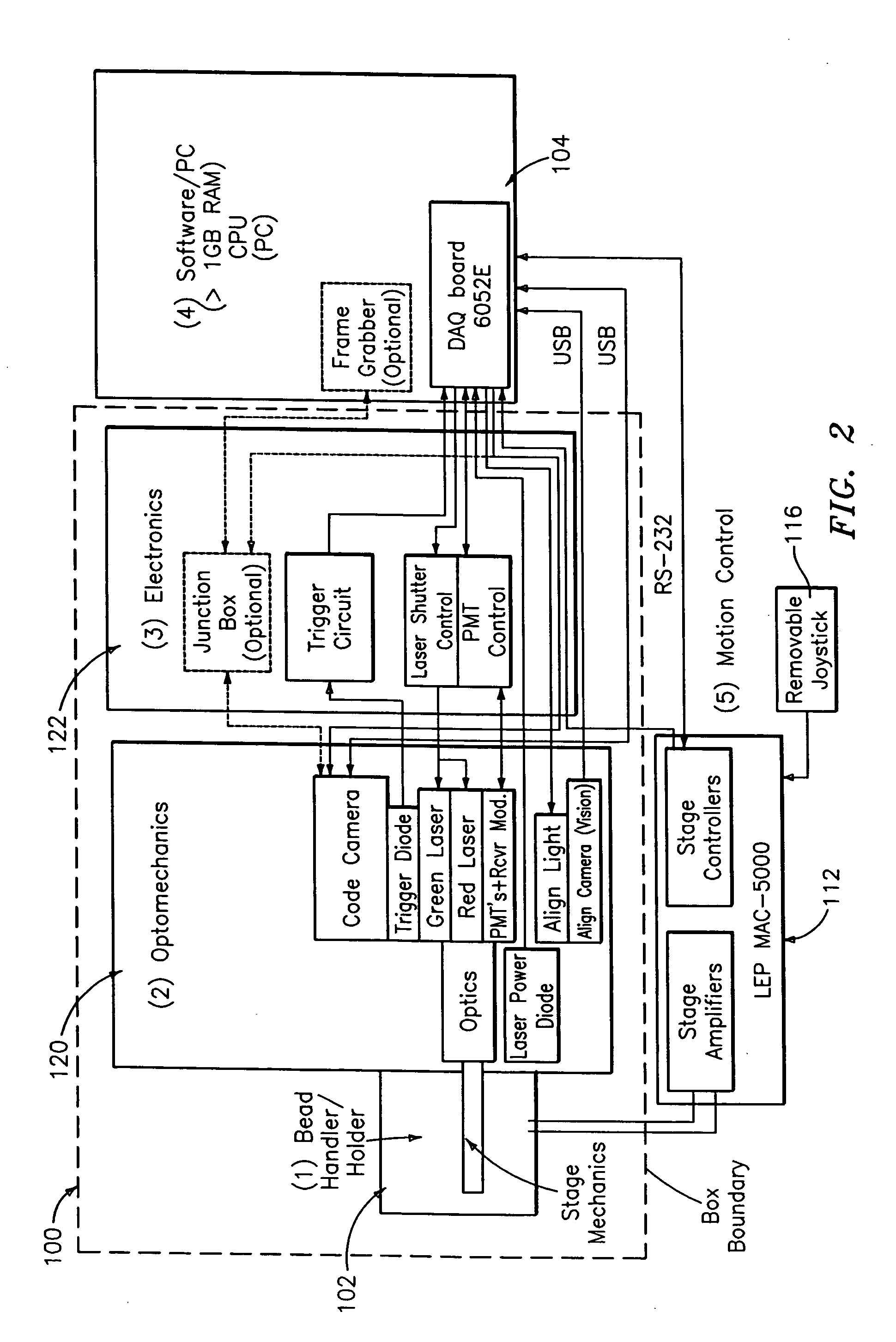Optical reader for diffraction grating-based encoded optical identification elements
an optical identification element and optical reader technology, applied in the field of optical readers for diffraction grating-based encoded optical identification elements, can solve the problems of large size of beads/substrates used for uniquely identifying the probes, insufficient existing technologies, and insufficient radio-frequency identification (rfid), etc., and achieve the effect of reducing the size of existing technologies
- Summary
- Abstract
- Description
- Claims
- Application Information
AI Technical Summary
Benefits of technology
Problems solved by technology
Method used
Image
Examples
Embodiment Construction
[0081] Referring to FIG. 1, an optical reader system 7 for diffraction grating based encoded optical identification elements (such as microbeads), comprises a reader box 100, which accepts a bead cell (or holder or cuvette or chamber) 102 that holds and aligns the microbeads 8 which have embedded codes therein. The reader box 100 interfaces along lines 103 with a known computer system 104 having a computer 106, a display monitor 108, and a keyboard. In addition, the reader box 100 interfaces along lines 114 with an stage position controller 112 and the controller 112 interfaces along a line 115 with the computer system 104 and a manual control device (or joy stick) 116 along a line 117.
[0082] The microbeads 8 are similar to or the same as those described in pending US patent application Ser. No. 10 / 661,234 (CyVera Docket No. CV-0038A), entitled Diffraction Grating Based Optical Identification Element, filed Sep. 12, 2003, which is incorporated herein by reference in its entirety, d...
PUM
 Login to View More
Login to View More Abstract
Description
Claims
Application Information
 Login to View More
Login to View More - R&D
- Intellectual Property
- Life Sciences
- Materials
- Tech Scout
- Unparalleled Data Quality
- Higher Quality Content
- 60% Fewer Hallucinations
Browse by: Latest US Patents, China's latest patents, Technical Efficacy Thesaurus, Application Domain, Technology Topic, Popular Technical Reports.
© 2025 PatSnap. All rights reserved.Legal|Privacy policy|Modern Slavery Act Transparency Statement|Sitemap|About US| Contact US: help@patsnap.com



